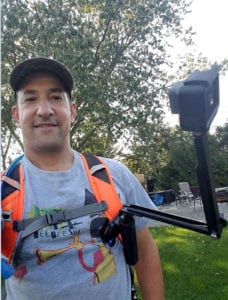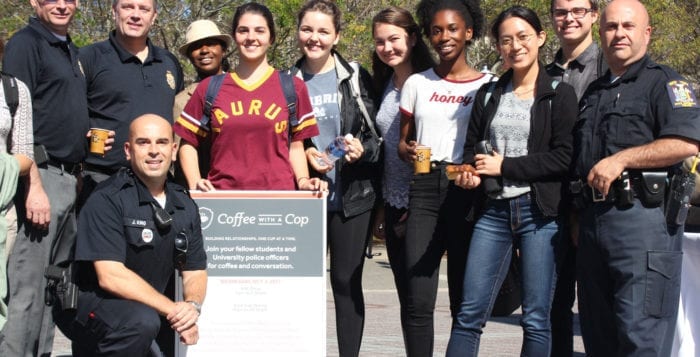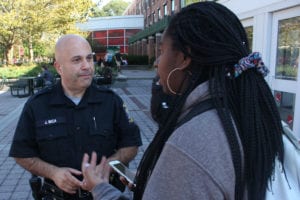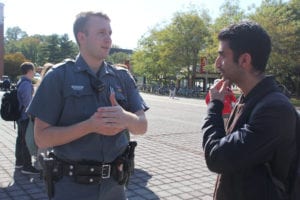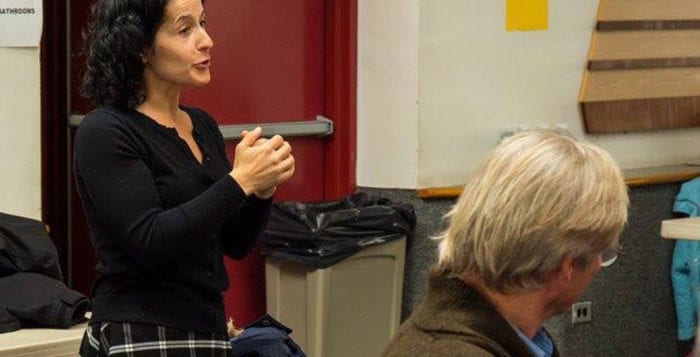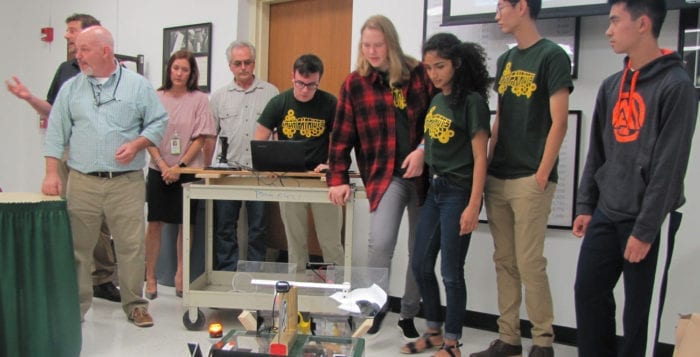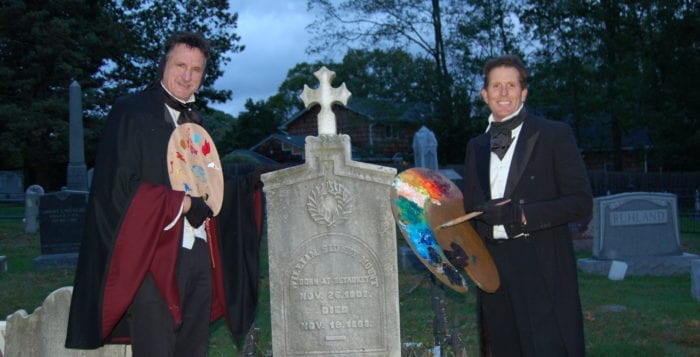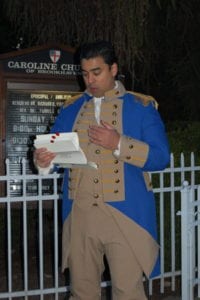By Donna Newman
As amended in 1846, the New York State Constitution includes a mandatory requirement that every 20 years state voters be offered the opportunity via a ballot proposal to convene a constitutional convention — called “Con Con” by those familiar with state politics — to review and revise the existing document. If a majority votes “yes,” delegates are elected to serve at a convention held in Albany.
A recent meeting of the Three Village Civic Association was devoted to informing the public about the proposal to be presented to New York State voters on Election Day with the debate titled “Shall there be a convention to revise the constitution and amend the same?”
Two guest speakers were invited to present opposing views of Proposal 1, the first of three proposals that will appear on the reverse side of the ballot listing the candidates for office Nov. 7. The civic association’s Vice President George Hoffman moderated the debate at the Emma S. Clark Memorial Library in Setauket.
The ballot question was last posed in 1997, when a majority of those voting said “no.” The last Con Con was held in 1967 and the voters later rejected all of the proposed changes. If a majority votes “yes” this time around, three delegates from each state senatorial district and 15 at-large statewide delegates will be elected in November 2018, according to the State Board of Elections website, www.elections.ny.gov.
“The delegates will convene at the Capitol in April 2019,” according to the website. “Amendments adopted by a majority of the delegates will be submitted to the voters for approval or rejection in a statewide referendum to be held at least six weeks after the Convention adjourns. The delegates will determine whether to submit proposed amendments as separate questions. Any amendments that the voters approve will go into effect on the January 1 following their approval.”
Anyone may run to be a delegate.
Anthony Figliola, vice president of Empire Government Strategies of Uniondale, a governmental consulting firm representing a variety of clients seeking liaisons in Albany, New York City or local municipalities, recommended a No vote.
Figliola’s primary argument is that a constitutional convention is an extremely expensive and risky way to affect change, especially when the document itself provides an alternative.

“The referendum process has been more successful as compared to Con Con,” he said. “There have been 600 amendments passed by the voters in our history. This year there will be a question on the ballot as to whether pensions should be taken away from any state legislator convicted of a felony. In 2013 there were six constitutional amendments proposed. Five of them were approved. The good government groups are coming from a good place. They are [working] to enact change and they are trying to move the legislature and get the public at large involved in the process.”
He also spoke about the last Con Con, held in 1967, calling it “an utter failure.”
“Of the delegates elected 80 percent were politically connected,” he said. “And 45 percent were either sitting [or retired] elected officials … collecting — or in the pension system. This allowed them to take two salaries, as there is no prohibition against it in the constitution. In addition to doubling their income, pension credits accrued by doing this raised their pension payouts.”
In the end, all of the proposed amendments to the constitution were submitted for voter approval in one package — which the voters rejected.
Al Benninghoff is a campaign manager for the Committee for a Constitutional Convention and also with New York People’s Convention. A longtime political strategist and reform advocate, he recommended a Yes vote.
Benninghoff’s case can be summed up in two words: It’s time.
The last time a Con Con question was proposed to voters in 1997, the New York City Bar Association called for a “no” vote and suggested: “Let’s give the legislature a chance to reform itself. We gave it 20 years and nothing has happened,” he said.
“Frankly, enough is enough,” Benninghoff said. “The legislature holds all the power. If the legislature doesn’t want to find it within itself to give us the opportunity to vote on an amendment to the constitution, then they can absolutely withhold it. And they have done that a lot.”
He went on to list things he believes should have already been addressed.
“There have been no ethics reforms; independent redistricting in name only, not in actuality; no term limits; and no campaign finance reform,” he said. “There’s still a tremendous loophole with LLCs [limited liability companies]. If a person running for state legislative office wants to take campaign donations from an infinite number of LLCs created by one person, or one company, they can do so. That’s a campaign finance loophole big enough to drive a truck through. What it does is empower the political status quo. It takes all the power away from the people — and that is exactly what a New York State Constitutional Convention changes.”
In New York State history there have been nine constitutional conventions. The longest gap between conventions has been since the last one in 1967. It’s been 50 years. The last one did not produce any changes, arguably because all the proposals were lumped together in a single vote.
As moderator of this informational session and the Q&A period that followed it, Hoffman remained clearly impartial. But in supplying additional data after the event he said he formed an opinion.
“I take the question to hold a constitutional convention very seriously and I am leaning to supporting it,” Hoffman said. “I see it as a solemn responsibility to periodically review our state constitution. I think it’s clear to most that many things need to change in Albany and a constitutional convention might be the only way to bring that change. I would seriously consider running for delegate if the constitutional convention is approved.”
For more information on the New York State Constitutional Convention, visit www.rockinst.org/nys_concon2017.



